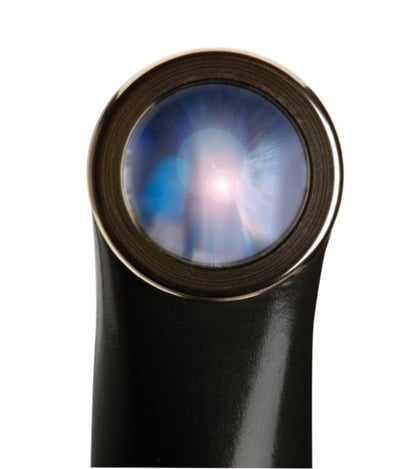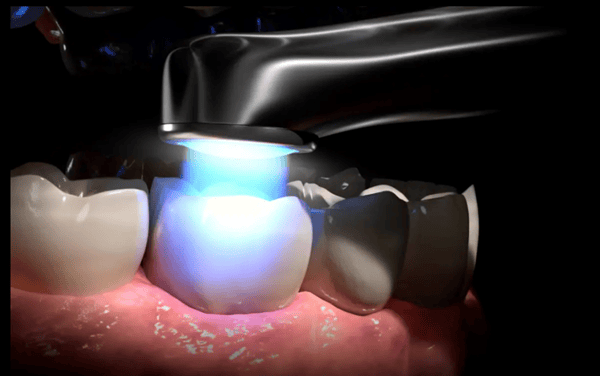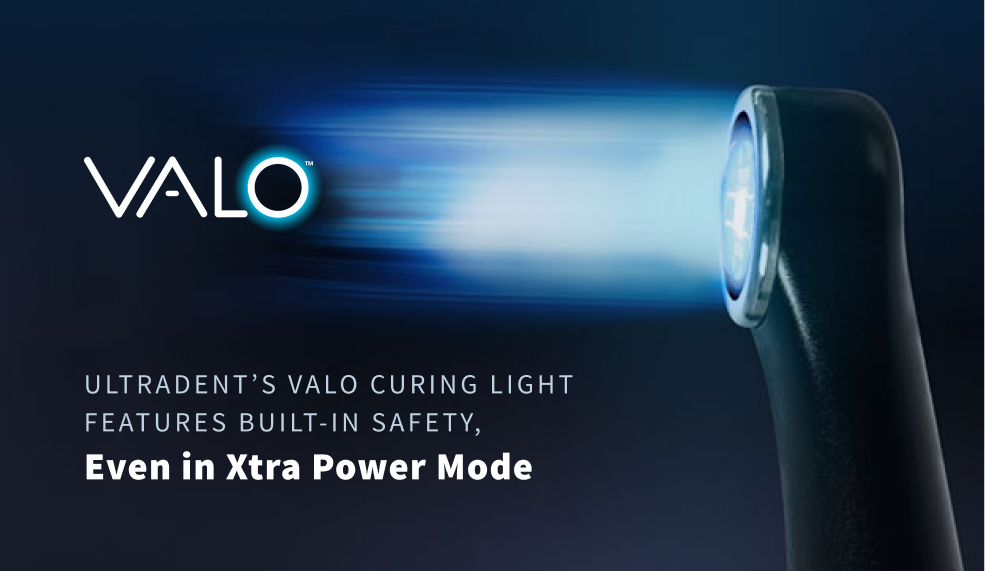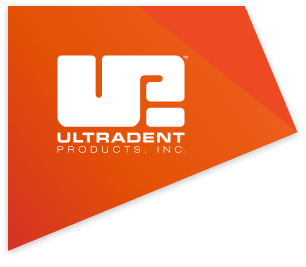By ShaLyse Walker
With so many dental curing lights available on the market today, choosing the proper curing mode from case to case can be a complicated process. Clinicians often reach out to us here at Ultradent with various questions about curing light performance and functions, like:
- Is it possible to overheat the tooth and damage the pulp with high intensity curing?
- Is one mode more effective than the other?
- Will high power curing increase composite shrinking?
Our award-winning line of VALO™ and VALO™ Grand curing lights were developed with these questions in mind.
Is High Intensity Curing Safe?
But let’s talk about safety. When used as directed, the VALO Grand curing light’s High Power Plus (1600 mW/cm2) and/or Xtra Power (3200 mW/cm2) curing modes cannot and will not damage the patients’ tooth or tooth pulp, even after multiple curing rounds.
The VALO Grand curing light, available in four colors.
“Even if you did three or four rounds on a patient’s tooth (over the recommended two rounds) using Xtra Power Mode with the VALO or VALO Grand curing light, the two-second delay between curing cycles that we purposely built into the light would allow the heat to dissipate and for the tooth to cool,” says Ultradent’s Vice President of R&D, Neil Jessop. “Overheating or burning the tooth or pulp on High Power Plus or Xtra Power Mode with the VALO Grand curing light would never be a problem. The only exception to that would be if the user acted carelessly and allowed the light to hit gingival tissue or exposed pulp, which should never happen.”

Ultradent’s Vice President of Research & Development, Neil Jessop
Jessop continues, “The greater danger would be doing several back-to-back ten-second cures at Standard Power (1000mW/cm2) because those ten seconds give the tooth a longer amount of time to absorb the heat—but even then, it would be very, very difficult to damage the tooth or the pulp using a VALO curing light.”
“Teeth are white and reflective, making them a challenging heat conductor in the first place. You add in safety protocols like product directions, built-in delays between curing cycles, even the patient breathing in cool air, as well as their blood flow during a procedure (which has a cooling effect on the tooth), and it makes it difficult to even heat a tooth above body temperature.” Jessop adds, “As a rule, we tell clinicians to use their best judgement, and to cure responsibly, using goggles and following the product and light manufacturer’s directions carefully.”
Standard Power, High Power Plus, or Xtra Power? What to Choose?
If high power curing is safe and effective, why would a dentist use the VALO curing light’s Standard Power Mode if they can cure faster and just as safely with a higher intensity and shorter cure time at High Power Plus or Xtra Power Mode?

Dr. Rafael Beolchi, a practicing clinician, lecturer, and researcher, explains his process when selecting the proper power mode for various procedures. “The Standard Power Mode with the VALO curing light is my work horse for day-to-day curing. I use it 85% of the time. In my practice, I am not under pressure to cure in little time. I prefer to take my time and cure well. Besides, ten seconds is a very acceptable amount of time compared to the 40 seconds we used to spend curing with halogen lights!”

Rafael Beolchi, DDS, MSx
“The three-second Xtra Power Mode (3200mw/cm2) with the VALO curing light is a fantastic option for specific applications, or when time is critical like when working with elderly patients, setting orthodontic brackets, working with TMJ challenged patients, or simply when working with patients experiencing dental anxiety. My wife is a pediatric dentist and an enthusiastic user of this mode to cure sealants on uncooperative or nervous children as well.”
Does High Intensity Curing Increase Shrinkage and Stress?

The VALO Grand curing light is differentiated by its large 12 mm lens, enabling it to cure a larger area quickly and effectively.
In terms of materials, dentists also often ask if high intensity LED curing increases composite shrinkage compared to using a lower irradiance, slower curing mode. Dr. Beolchi says, “Regardless of how a composite is cured, it will only shrink the amount it was designed to shrink by the manufacturer. The amount of stress applied will differ from Standard Power Mode to higher-intensity modes, but this can be overcome with different placement methods.”
He then suggests counteracting any additional stress on the composite when high power curing by following these three tips:
- Place the composite at a maximum thickness of 2 mm increments. This will eliminate as much stress as possible.
- Wedge the increments to decrease the amount of tooth surfaces being cured at one time.
- Allow 2 seconds between cures to let the composite rest.
Best Practices for High Intensity Curing

The VALO Grand light uses a custom, multi-wavelength light-emitting diode (LED) for producing high intensity light at 385-515 nm, capable of polymerizing all light-cured materials.
Dr. Beolchi’s other tips for successful high-power curing include:
- Protect soft tissue with cotton or a resin barrier material such as OpalDamTM resin barrier.
- Use a direct stream of air from a triway syringe just prior to, during, and shortly after light exposure.
- Avoid exposed pulp.
- Angle the light directly onto the tooth, ensuring it’s properly placed before turning on the light.
When it comes to other curing light brands and products, following the manufacturer’s directions on both the product and the curing light serve as the clinicians’ best resources for curing safely and adequately, every time.
Click here to learn more about Ultradent’s award-winning VALO and VALO Grand curing lights.








